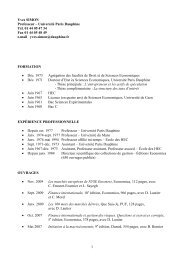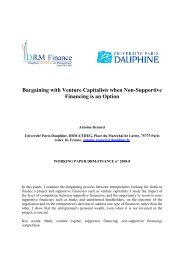Corporate governance and earnings management ... - CEREG
Corporate governance and earnings management ... - CEREG
Corporate governance and earnings management ... - CEREG
Create successful ePaper yourself
Turn your PDF publications into a flip-book with our unique Google optimized e-Paper software.
against equities <strong>and</strong> even to restrict this solution to certain subsidiaries which stirs the<br />
reprobation of the majority of authors.<br />
These observations permit to draw the following conclusions. From 1985 onwards the<br />
German legislator has opened the doors to allow for the use of dynamic solutions (in the<br />
individual <strong>and</strong> the consolidated accounts) <strong>and</strong> the weakened static solution (consolidated<br />
accounts only) while retaining the possibility of a pure static solution. The German groups<br />
have “voted” <strong>and</strong> showed their clear preference for a solution of the weakened static style.<br />
The dynamic solution although not negligible is a secondary one. The pure static solution has<br />
become an oddity.<br />
All that material permits to ascertain that, due to the decisive importance of the<br />
consolidated accounts, the 1985-2000 period has rather been that of the weakened static<br />
solution. So, what could appear for Mildebrath in 1931 (Mildebrath, 1931), as an anglo-saxon<br />
specificity has become 50 years later a German oddity!<br />
3.3. Phase 2 in France: the fiscal approach (1917 – 1982)<br />
From 1917, a new, powerful actor began to intervene on the French accounting scene: the<br />
tax administration. Its theory of how goodwill should be treated was to have great influence<br />
on commercial doctrine <strong>and</strong> regulations, so much so that the situation has been described as<br />
the “hijacking” of accounting by taxation. This phenomenon was unique in the four countries<br />
studied <strong>and</strong> lasted more than sixty years from 1917 to 1982.<br />
a) The new doctrine of the French tax administration in the individual financial statements<br />
To begin with, when the first major French law (the law of July 31, 1917) on income taxes<br />
was enacted, the tax view was not openly hostile to the static approach. Article 4 of the law<br />
simply stated that taxable profit was the amount after deduction of all expenses, including<br />
“amortization generally accepted in the practices of each type of industry”.<br />
37



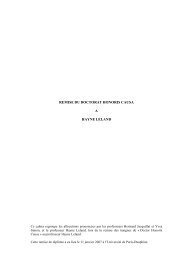

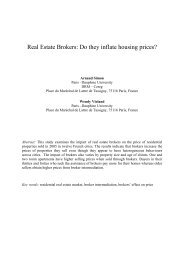
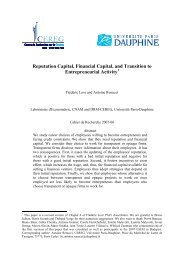

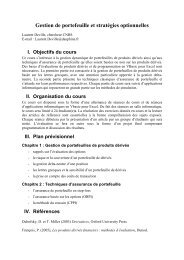


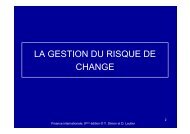
![& 6 ] ^ F ]^ - CEREG - Université Paris-Dauphine](https://img.yumpu.com/33326502/1/184x260/-6-f-cereg-universitac-paris-dauphine.jpg?quality=85)

